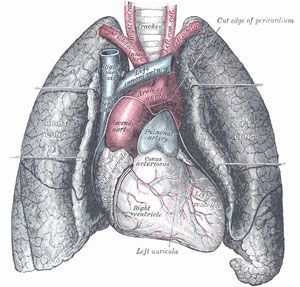Publication
Article
Oncology & Biotech News
Poster Session Highlights: 12th International Lung Cancer Congress
Author(s):
A highlight of 3 poster sessions from the 12th International Lung Cancer Congress on August 12, 2011 in Carlsbad, CA.

Circulating Tumor Cells May Act as Prognostic Markers in Late-Stage NSCLC
Recent data suggest that circulating tumor cells (CTCs), which are an established prognostic marker in metastatic prostate and breast cancer, may play a similar role in late-stage non—small cell lung cancer (NSCLC). Researchers studied CTC counts, morphology, and aggression in patients with early stage, locally advanced, and metastatic NSCLC. They did this through the use of a fluid-phase biopsy approach, which helps to identify CTCs without relying on surface receptor-based enrichment and presents CTCs in high definition (HD) in order to help satisfy diagnostic pathology image-quality requirements.
The researchers collected blood samples from 78 chemotherapy-naïve NSCLC patients and analyzed the HD-CTCs. Seventy-three percent of the population had a positive HDCTC count (>0 CTC in 1 mL of blood) with a median of 4.4 HD-CTCs/mL and a mean of 44.7 HD-CTCs/mL. There were no significant differences detected in the median HD-CTC counts of patients with stage IV, stage III, and stage I/II disease. The HD-CTCs exhibited uniformity in molecular and physical characteristics, such as fluorescent cytokeratin intensity, nuclear size, frequency of apoptosis, and aggregate formulation across all stages.
This research demonstrates that the HDCTC assay shows high sensitivity in the detection and characterization of both earlyand late-stage lung cancer CTCs.
Bazhenova L, Wendel M, Boshuizen R, et al. Abstract presented at: 12th International Lung Cancer Congress; August 12, 2011; Carlsbad, CA.
Belagenpumatucel-L May Improve Long-Term Survival in NSCLC
Researchers presented a 5-year followup to the 2006 phase II study of belagenpumatucel-L that reported on survival analysis. Belagenpumatucel-L is a nonviral gene-based allogeneic tumor cell vaccine for non—small cell lung cancer.
A total of 75 patients were enrolled in this 3-arm, open-label clinical trial. At enrollment, 2 patients presented with stage II lung cancer, while 12 presented with stage IIIA, 15 with stage IIIB, and 46 with stage IV disease. Patients were randomized into 3-dose cohorts of 1.25, 2.5, or 5 x 107 cells/injection. Cellular (ie, ELISPOT and cytoplasmic cytokine expression) and humoral (ie, antibody ELISA) immunity assays were completed and were correlated with survival.
Median survival for all patients was 14.5 months, with a 5-year survival rate of 20%. Stage IIIB/IV patients had a median survival of 15.9 months, with a 5-year survival rate of 18%. Patients at stage IIIb/IV with nonprogressive disease following front-line chemotherapy had a median survival of 44.4 months and a 5-year survival rate of 50%.
Based on these encouraging survival data for patients with stage IIIb/IV disease, researchers will begin a pivotal phase III trial to evaluate the efficacy of belagenpumatucel-L in patients who have stable disease after frontline chemotherapy.
Bazhenova L, Carrier E, Shawler DL, Fakhrai H. Abstract presented at: 12th International Lung Cancer Congress; August 12, 2011; Carlsbad, CA.
Study Uses the PHQ-2 and PHQ-9 Questionnaires to Assess Depression in Lung Cancer Patients
A pilot study was designed to evaluate the prevalence of depression in lung cancer patients. Between February and May 2010, 143 patients were given the Patient Health Questionnaire-2 (PHQ-2), a validated 2—item screening tool for depression. Patients who screened positive for depression on the PHQ-2 then completed the Patient Health Questionnaire 9 (PHQ-9), a 9-item depression-assessment tool.
Of the 143 patients, 131 completed the PHQ-2 screen. Patients with malignancies other than lung cancer were excluded from the analysis, leaving 70 eligible patients. Twenty patients screened positive for depression using the PHQ-2. Of those 20, 16 patients reported feeling “down, depressed, or hopeless,” 15 indicated having “little interest or pleasure in doing things,” and 11 reported positive associations with both questions.
Of the 20 patients who scored a positive PHQ-2, 15 also completed the PHQ-9. Depression severity ranged from mild to severe with a median score of 11.4, suggesting moderate depression.
Although this study found a high prevalence of depression among lung cancer patients, no suicidality was reported. The most highly reported item on the PHQ-9 form was fatigue. It is not known, however, if fatigue is a true symptom of depression or of the cancer.
Randall JM, Voth R, Cheney E, Bazhenova L, Bardwell WA. Abstract presented at: 12th International Lung Cancer Congress; August 12, 2011; Carlsbad, CA.









